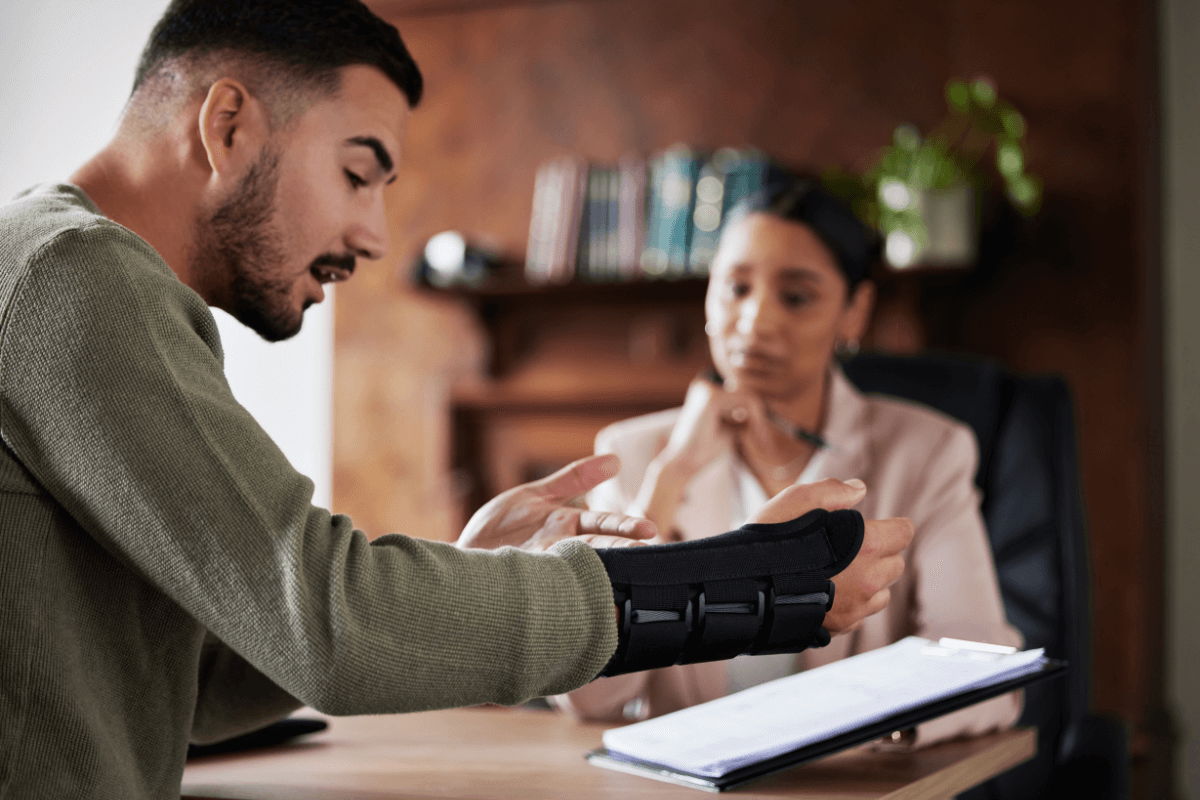
If you’re brave enough to type “table saw injuries” into a search engine, you’ll quickly come to realize that these are some of the most dangerous, or potentially dangerous, tools people use. One study by the National Library of Medicine aggregated information from various databases in order to examine table saw injury incidents. They found that more than 30,000 table saw injuries occur each year.
Injuries in which a person comes into contact with the table saw blade are by far the worst and most common types of injuries caused by these tools. Most of these injuries occur to the fingers and thumbs. Lacerations occur approximately 66% of the time, but amputations are not uncommon, and they occur in 10% to 15% of all table saw injury incidents.
On August 4, 2022, DeWalt recalled more than 1 million miter saws, which are a type of table saw, due to the risk of injuries posed by the rear blade guard breaking or detaching during use, according to the Consumer Product Safety Commission (CPSC).
Examining the Recall of DeWalt Miter Saws
The DeWalt recall included around 1,364,000 miter saws. The risks include the rear blade guard detaching and either becoming a projectile hazard to buy standards as well as a laceration hazard to the individual using the saw if they come into contact with the spinning saw blade.
According to Consumer Reports, DeWalt has received 571 reports of the rear guard breaking or detaching from the saw, and this includes nine reports of laceration injuries to individuals.
What Consumers Can Do
It is important for individuals who believe their DeWalt miter saw may be affected by this recall to know which models are involved. This includes the miter saw models:
- DWS779
- DWS780
- DHS790
These cells have a yellow body with the typical black accents that we would see on a DeWalt tool, along with the DeWalt logo. You can find the model number printed on the nameplate of the saw. The songs that you need to focus on will include date codes 2019 04 through 2022 04.
According to the CPSC, consumers should immediately stop using their DeWalt miter saw if they discover the saw is affected by the recalls. Consumers can contact DeWalt to receive a free repair kit, or they can take their saw to a DeWalt service center to be repaired for free. At this time, the company is attempting to contact all known purchasers of these saws, but that is harder to do if a person has acquired a recalled saw second-hand. That is why it is strongly recommended that consumers check any DeWalt miter saw that they have in their personal possession or in their business to see if it has been affected by the recalls.
These saws were sold at Home Depot, Lowe’s, and many other hardware stores nationwide. Additionally, these saws were also sold online at retailers like Amazon, Lowe’s, Home Depot, and other websites. Typically, they recalled soles retail at between $600 and $820.
Tool Injuries Can be Devastating
Miter saws and other types of table saws are ubiquitous equipment used in professional, home, and school settings. However, just because these cells are common does not mean they are injury free. Far from it. Injuries caused by miter and table saws can be incredibly severe, often affecting fingers, hands, and lower arms.
As mentioned above, some of the most common injuries include lacerations and amputations. Contact with a saw blade, often as a result of missing or faulty rear guards, can result in damage to the skin, nerves, muscles, tendons, veins, and arteries.
Unfortunately, these types of injuries could lead to an individual needing a significant amount of emergency and ongoing medical care. In cases where an individual has sustained an amputation, this may require complete changes to their day-to-day activities and work life.
Liability for Tool Injuries
Liability for tool injuries, including liability for the DeWalt miter saw injuries, could vary depending on this situation. When tools become defective, liability will typically fall to the tool company or manufacturer, the retailer who sold the tool, or an employer who continues to use the tool after the danger has been made known.
Defective products
Defective product incidents, when they cause injuries, typically fall under strict liability product liability claims. This means that individuals do not have to go through the typical route of proving negligence on the part of the liable party. So long as it can be shown that the tool was defective and the defect caused the injury, the manufacturer or company will be held liable for the injuries. For example, since there have been 571 reports of injuries caused by the defective DeWalt miter saw, it is very likely that the company will be responsible for paying any injury expenses those victims sustained.
Additionally, now that the product has been recalled, any retailer who continues to sell the product to consumers could be held liable for failing to remove the product from the shelves promptly.
Employer liability
Individuals regularly use these tools on the job. It is crucial for employers and supervisors to regularly inspect and maintain each tool used on their premises to ensure worker safety. This includes staying aware of any recalls of tools inside the work environment. If an employer continues to allow their workers to use recall tools, this could constitute gross negligence on the part of the employer.
If an employee then sustains an injury as a result of the defective tool, they may not only be able to recover workers’ compensation, but they may be able to hold the employer responsible through a third-party personal injury lawsuit, which could result in additional types of compensation being paid out.
Consumer liability
In some situations, a consumer may be held liable for their own injuries, even if the tool that caused the injury was under recall. If a consumer knew or should have known about the recall but continued to use the tool and failed to take the steps recommended by the manufacturer or the CPSC, then the consumer may not be able to hold other parties responsible for their injuries.
Beyond the realm of table saw injuries, there are numerous other situations where individuals can find themselves at risk. For instance, the opioid crisis has had a significant impact on personal injury claims. Similarly, sports-related injuries can lead to legal liabilities, with questions arising about who can be held responsible.
Construction sites, with their intricate blueprints, present their own set of dangers. It’s essential to be aware of these risks and understand the legal implications. For a deeper insight into various cases and their outcomes, one can explore the case results section. Additionally, accidents involving elevators and escalators can lead to premises liability issues, and it’s crucial to have a comprehensive understanding of premises liability in such scenarios.
Categories
- Bicycle Accidents
- Car Accident
- Case results
- Class Action
- Community Aid
- COVID-19
- Fun
- General
- Hard Rock Lawsuits
- Holiday
- Insurance Claims
- Legal Advice
- Mardi Gras Accident Attorney
- Mass Tort
- Medical
- Motorcycle Accident
- Personal Injury
- Practices
- Premise Liability
- Recent News
- Safety
- Truck Accidents
- Uncategorized
- Weather
- Work-Related Accident

In 2003, after being dissatisfied with the quality of legal care for victims of car accidents, Roderick ‘Rico’ Alvendia sought to establish a new firm focused on providing high-quality legal services to aid injured victims and their families. J. Bart Kelly, sharing Rico’s passion for upholding justice, joined the firm later that year, and established a partnership.






